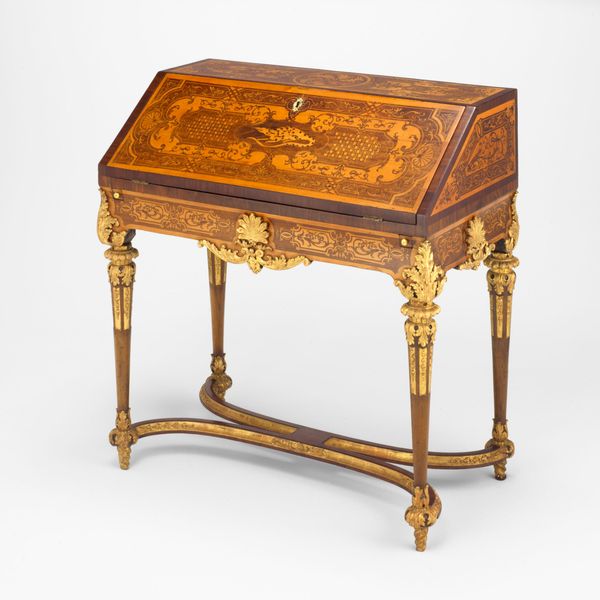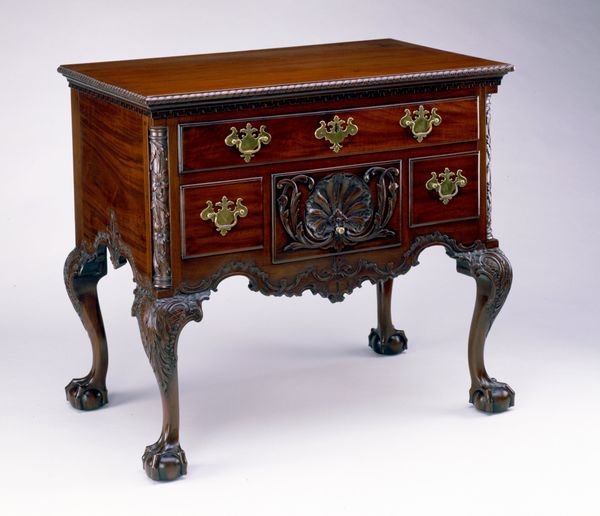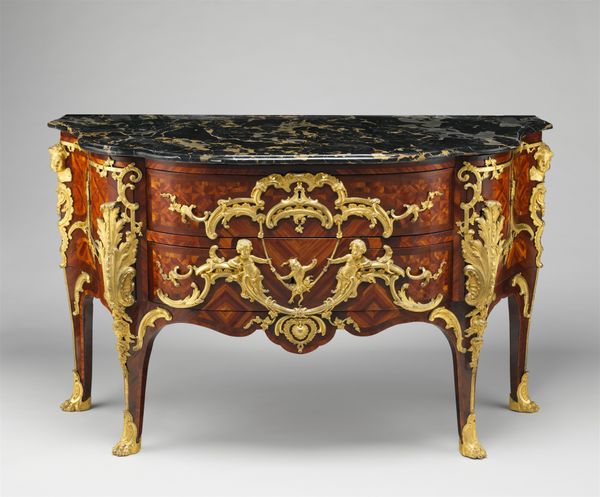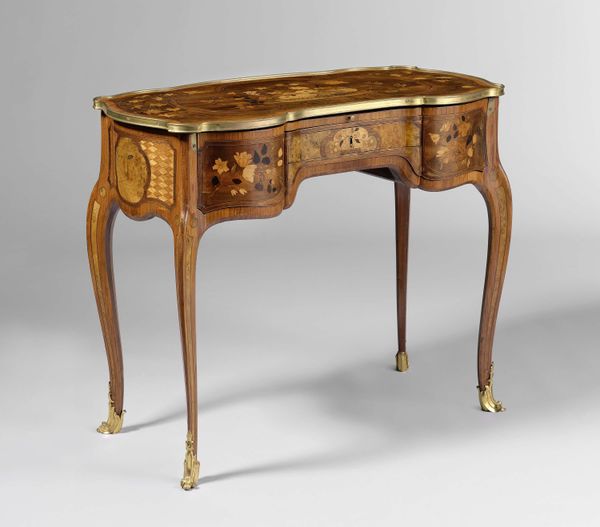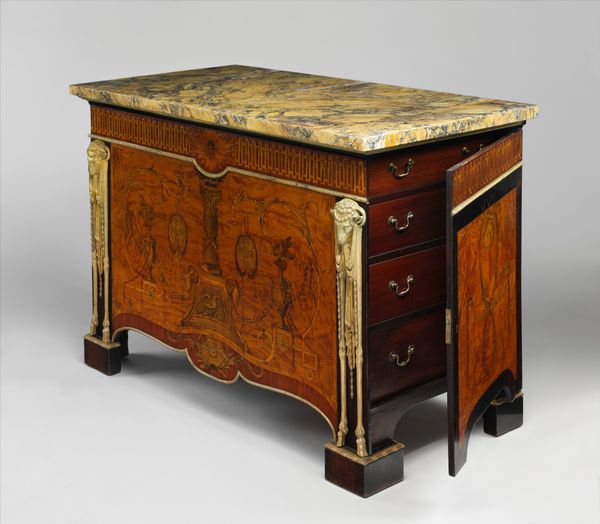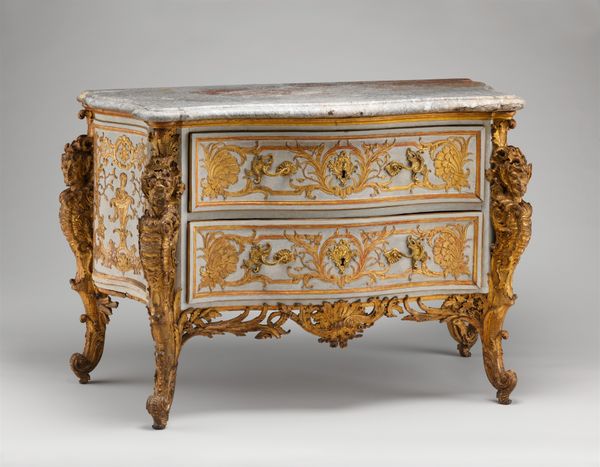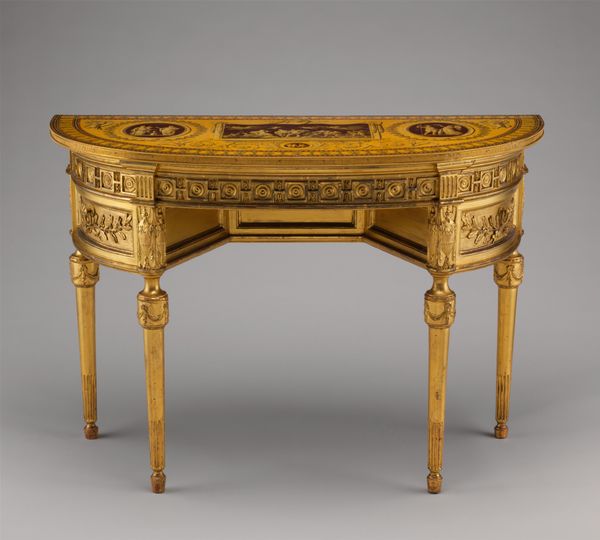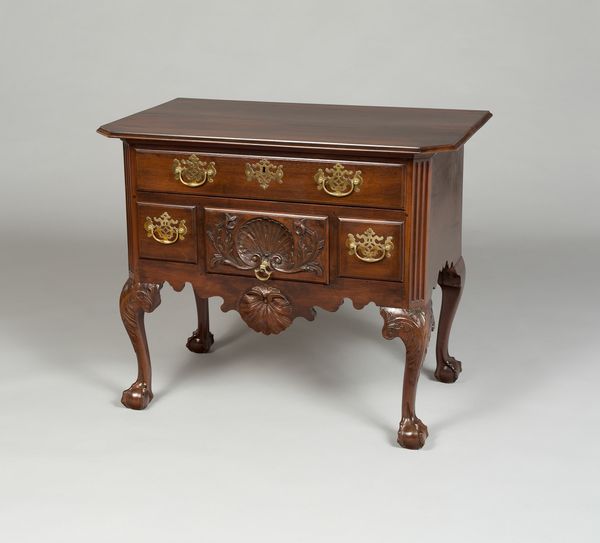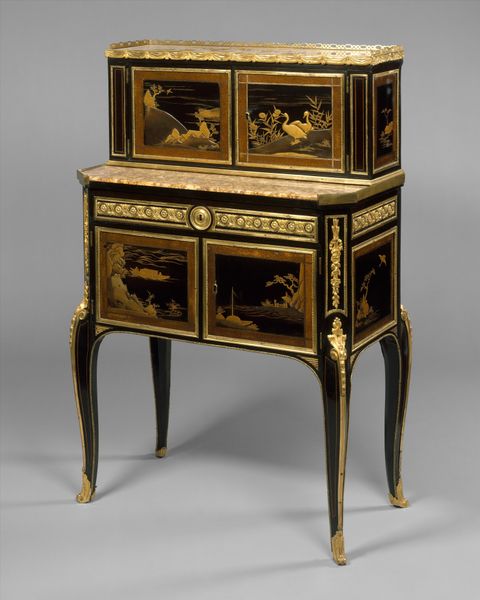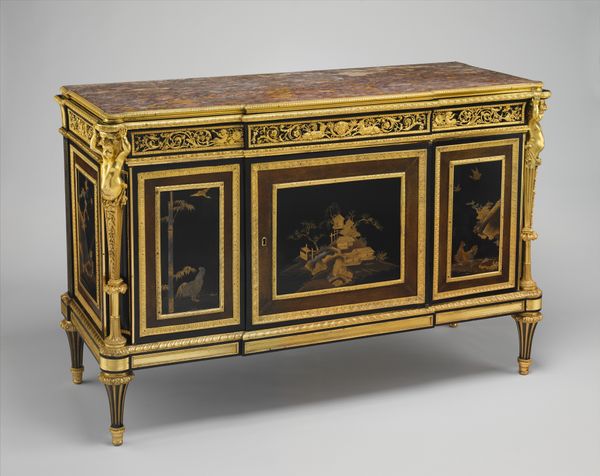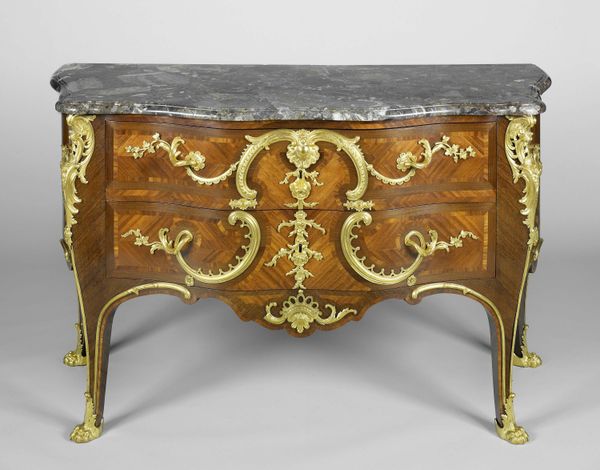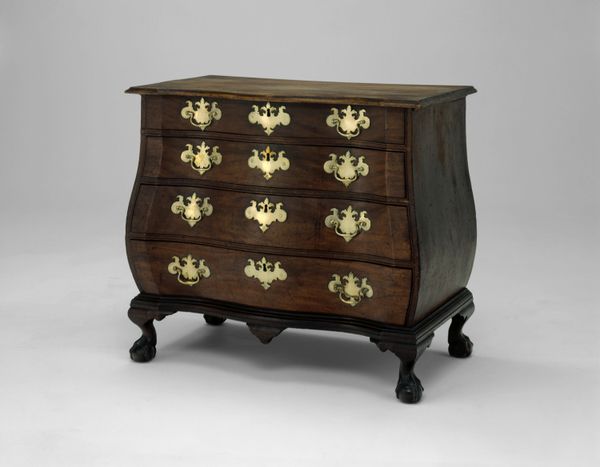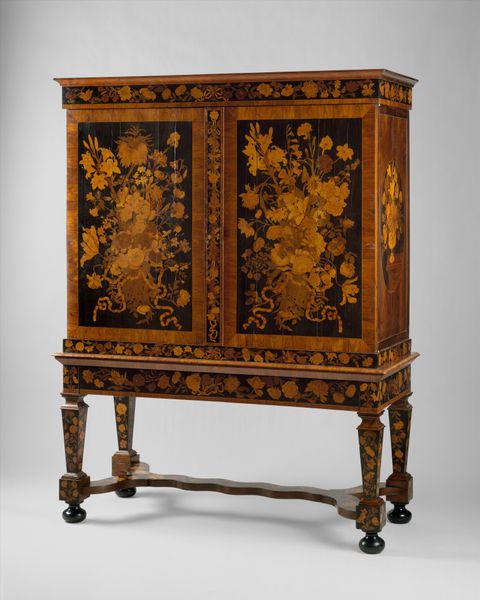
Bureau en taboeret van eiken- en grenenhout, belijmd met mahoniehout en versierd met beslag van verguld brons 1836 - 1847
0:00
0:00
mixed-media, carving, metal, bronze, wood
#
neoclacissism
#
mixed-media
#
carving
#
metal
#
furniture
#
bronze
#
wood
#
decorative-art
Copyright: Rijks Museum: Open Domain
Editor: Here we have a Bureau en taboeret, a desk and stool made between 1836 and 1847 by Jacob, a furniture maker. It’s crafted from various woods, bronze, and other metals. It strikes me as so opulent; it’s hard to imagine someone actually using it for work. What do you see in this piece, considering its place in history? Curator: I see a powerful statement about status and access to education during the first half of the 19th century. Neoclassical design, as exemplified here, consciously evokes the grandeur and philosophical weight of the ancient world. Note the desk’s winged lion paws. To whom was this desk speaking? Editor: I see what you mean. It’s less about practical use and more about presenting an image. So, you’re suggesting that owning something like this signified more than just wealth? Curator: Exactly. Consider the rise of the bourgeoisie during this period and their aspirations to emulate the aristocracy. A desk like this, adorned with classical motifs, positions its owner as learned, sophisticated, and worthy of respect, someone involved with politics. What sort of access might one have, with a desk such as this one? Editor: Okay, I get it. So the desk is kind of like a prop in the theater of social climbing. It is an active attempt at controlling social standing! Thanks, I'll be sure to make this clear in my notes! Curator: Precisely. Understanding its socio-political context really unlocks another layer of meaning. Editor: This makes me look at decorative art in a different way, far beyond aesthetics! Curator: Yes, hopefully you remember this for your future coursework.
Comments
No comments
Be the first to comment and join the conversation on the ultimate creative platform.
